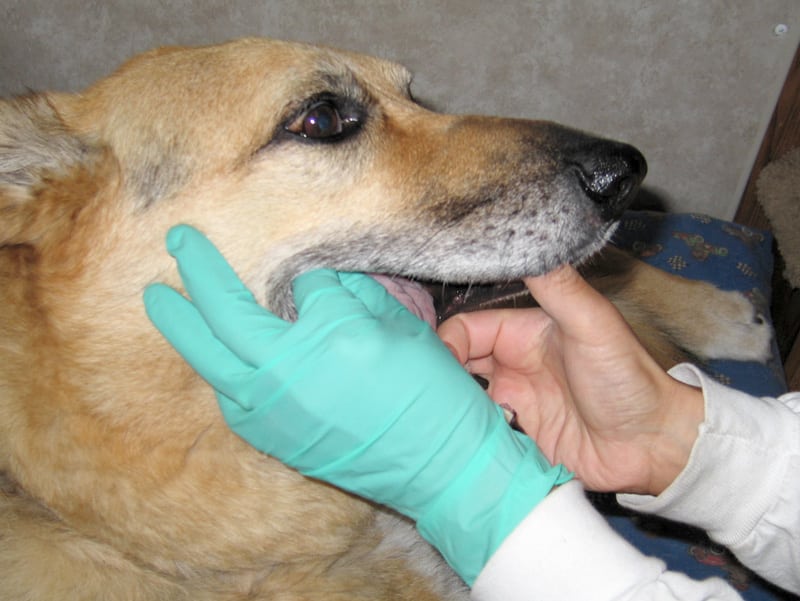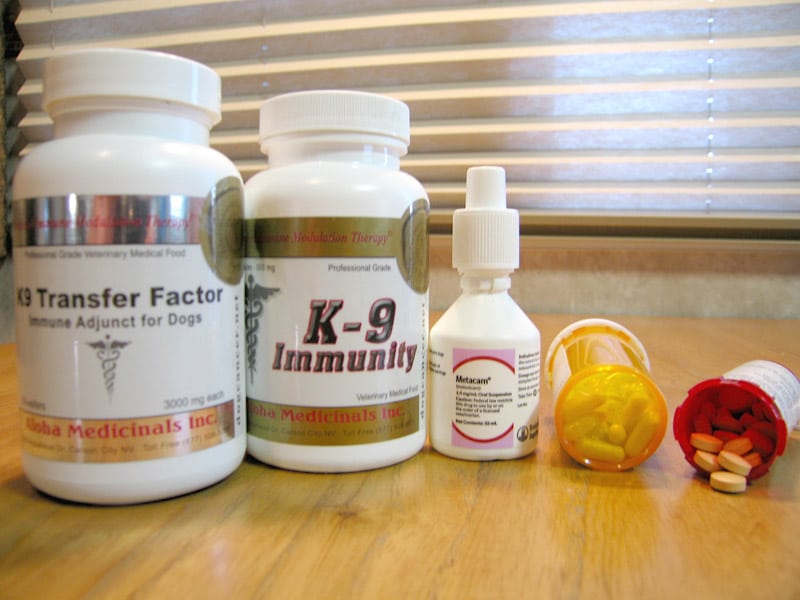The following article was written for the website, Tripawds.com, an online community for three legged dogs. Many of Tripawds’ members are battling cancer, and searching for innovative new ways to fight the disease. This story was written from the perspective of Jerry G. Dawg, Founder of Tripawds.com
My Metronomic Therapy
Image may be NSFW.
Clik here to view. When I was first diagnosed with osteosarcoma, my Mom and Dad didn’t want to put me through chemotherapy, mostly because it was a six hour drive to the hospital, and, since doctors said that I only had a few months left even with chemo, we didn’t want any of our precious time to be taken up with poking and prodding and long drives.
When I was first diagnosed with osteosarcoma, my Mom and Dad didn’t want to put me through chemotherapy, mostly because it was a six hour drive to the hospital, and, since doctors said that I only had a few months left even with chemo, we didn’t want any of our precious time to be taken up with poking and prodding and long drives.
We took our chances, hit the road, and beat the odds, but now, fifteen months later, the cancer devil has paid us another visit. We are prepared to beat the odds again, only this time, we’re going to do it with the help of something called “The Metronomic Protocol.”
Treating Osteosarcoma with Chemotherapy
Most of you know that chemotherapy can help dogs beat cancer. Usually, chemotherapy drugs are given in high doses every couple of weeks, and administered in an injection of some sort. Most of us aren’t affected by chemo drugs like people are; if the drugs are given correctly. And if a dog does experience side effects, the oncologists can lessen the doses and lengthen the treatment time. Our friends at Bone Cancer Dogs have a lot of good information about traditional chemotherapy for osteosarcoma.
When I got the bad news a few weeks ago, my Mom and Dad couldn’t rest without trying something that might give me more time on this earth. Dad did some research on different chemo treatments, and learned about the Metronomic Protocol. It’s chemo in a pill, and it can be done anywhere . . . even in an RV, on the road! It seemed too good to be true. At home chemotherapy?
Since we were going back to New Mexico for a while, my Mom found the wonderful women at the Veterinary Cancer Care clinic in Santa Fe, who are doing this therapy for their patients. We paid them a visit, and learned more about this option.
Why I’m On the Metronomic Therapy
Image may be NSFW.
Clik here to view. My oncologist, Dr. Mullins, went over a few options with us, including surgery to remove my affected lung. Surgery is good for dogs that have no more than two tumors that are affecting less than 50 percent of a lung. But there’s a good recovery time involved, and at my age and where I’m at in life, we decided to pass on this option.
My oncologist, Dr. Mullins, went over a few options with us, including surgery to remove my affected lung. Surgery is good for dogs that have no more than two tumors that are affecting less than 50 percent of a lung. But there’s a good recovery time involved, and at my age and where I’m at in life, we decided to pass on this option.
We also discussed standard chemotherapy. But Dr. Mullins says that at this stage in my cancer, there is only a 5 to 15 percent chance that standard chemo will work on me. There’s a slight chance that it could work better than expected, because my cells have never been hit with a blast of chemo. Still, the odds are slim, so with such a little chance of success, Dr. Mullins suggested that we try the Metronomic Therapy.
How Does the Metronomic Therapy Work?
Image may be NSFW.
Clik here to view. Metronomic Therapy will allow Mom and Dad to give me frequent, low doses of three drugs that, when used together, will help stop blood vessel development in my lung tumors. See, if you starve a tumor of their main food souce, blood, they can’t grow! This is called the “Anti-Angiogenic” effect.
Metronomic Therapy will allow Mom and Dad to give me frequent, low doses of three drugs that, when used together, will help stop blood vessel development in my lung tumors. See, if you starve a tumor of their main food souce, blood, they can’t grow! This is called the “Anti-Angiogenic” effect.
Dr. Mullins wants us to keep in mind that this therapy is not a cure, but rather a way to stop the tumors from getting bigger, and keep them from spreading into more of my lungs.
What Chemotherapy Drugs Am I Taking?
There are three drugs that I am taking:
Cytoxan: a chemotherapy drug that I take every other day. At this low, constant dose, it’s been shown to inhibit blood vessel growth. Mom and Dad wear special gloves so they don’t get it on their skin, and they check my pee a lot to make sure it’s not causing trouble.
Metacam: a non-steroidal drug with potent COX-2 inhibiting properties. I take this every day. COX-2 is a receptor that’s been found to play a role in tumor development, by slowing them down. In one study, 77% of osteosarcoma expressed the COX-2 receptor (Mullins et al JVIM 2005. Other non-steroidal drugs include the name brands of Piroxicam, Rimadyl, and Previcox.
It’s great that Metacam is part of this protocol, because that’s what I’ve always taken for my arthritis. I tried Previcox in the past, but it made me very sick. Once that happened, my Mom really didn’t want to give me any of these drugs. But now, she says it’s a “risk / benefit” thing. My doctor says that not only will the Metacam help slow down the tumors, but it will keep my muscles feeling good by keeping any tissue damage or swelling down. If my muscles stay healthy, then my body is that much stronger and able to fight back. So Mom is willing to take the chance of giving me a lower dose of Metacam every day, if it will help me kick cancer’s butt.
Doxycycline: an antibiotic, just like the ones you people take when you get sick. When given at low doses, Doxycycline can prevent blood vessels from forming and feeding tumors. It does not affect the existing tumor(s) though. Like Metacam, I take this every day too.
K9 Immunity and My Cancer Therapy
These are the three main drugs of my chemo treatment. On top of that, I’m an especially lucky dog, Dr. Mullins’ clinic is participating in a K9 Immunity trial, and I qualified for it! Now, I’m taking K9 Immunity and K9 Transfer every day. The doctor says that her patients have done exceptionally well on K9 Immunity when taken with the Metronomic Therapy, so we are really, really excited about this. I’ll tell you all about it later on.
My New Diet
My diet and supplements have changed a little bit, and Mom has updated my Health Tips page. So far, I feel pretty great, like my usual self. I didn’t have any side effects, until just yesterday when Mom gave me a can of cooked mackerel for dinner, one of my favorite foods. It didn’t quite agree with me. Ick! I’m feeling better though, thanks to a big dose of pumpkin pulp last night.
The Metronomic Protocol is a relatively new kind of option for bone cancer dogs, and because studies are still out on it, Dr. Mullins can’t give a prognosis for how long the cancer can be kept far away, where it belongs! Still, she says that she has seen many dogs in her clinic do quite well on it, and I know that I’m going to be one of them!
Stay tuned, because in the near future, I’ll talk about:
- Costs involved with different therapies for treating pulmonary metastasis
- K9 Immunity and how it helps bone cancer dogs
- Different diets for bone cancer dogs, and more!